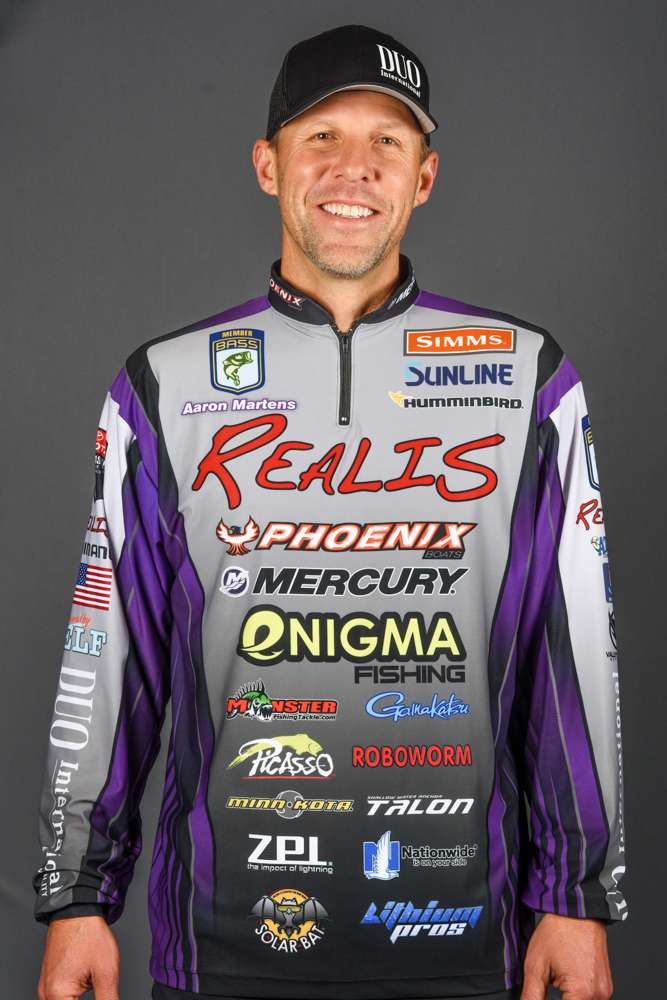Last week I was out at the Bassmaster Open on the Harris Chain of Lakes in Florida. I apologize for missing my blog, but, as promised, I'm back with some prespawn spinnerbait tips for you.
Fishing a spinnerbait in the prespawn is one of my favorite patterns of the entire year. It's rarely a simple cast and wind pattern, but more of a methodical, slow, almost walking the bait back to the boat through whatever obstacles I can find below the surface pattern. It's a very mental technique. You really have to imagine the bait working along the bottom and how the bass are seeing it and reacting to it. I'll slide it, drop it, hop it, crawl it, bounce it, rip it or just leave it on the bottom for a bit. What the fish want can change week to week, day to day and sometimes hour to hour so it's important to have fun with it and experiment with all the variables.
I target the fish exactly as I do with the lipless crankbait. Starting on main lake points and working my way back to flats, coves and tributaries. For details, please see my previous blog.
Getting the right spinnerbait for the job is important. There are literally thousands of combinations that can make up a spinnerbait. You have blade shapes, blade colors, head shapes, head colors, skirt materials and skirt colors. I'll attempt to keep it simple, but I do like to experiment.
When deciding on a blade combination I'll always start with a small Colorado blade and a larger willow blade. For lakes where the fish spawn deeper — five to 15 feet — I'll use a double willow blade setup. The double willow allows me to keep the bait deeper. Typically I use a size 3.5 and size 1 willow leaf blades for this setup.
I will vary the colors of the blades quite a bit. I use a chrome and gold combo most commonly, but I also like painted blades this time of year. A great thing about the painted blades is that when the fish are really getting pounded with the reflective blades, sometimes the painted blades are the perfect change to get more bites.
For head and skirt colors, it again really depends on the body of water, but in an attempt to help narrow it down, here's a quick list of my starting colors for a few states.
California: Clear, and pearl white with a green back
Alabama: Pearl white with silver and a natural shad back
Florida: Pearl white or clear with green and gold flake
Texas: Chartreuse and white
New York: Glimmer blue with chartreuse
Chartreuse and white is the color I use most, followed by natural colors, Table Rock shad and a reddish orange combination. I especially like the reddish orange blade in dirtier water or on dark days. I'll highlight it with some black to darken it up a bit. The fish during the pre spawn are feeding aggressively and by reaction. All you need to do is get their attention and they'll eat.
The equipment for this technique is very important because prespawn fish are hot. You need the right equipment to keep the fish out of dock pilings, cover, weeds and grass once you get them on. I use a Megabass Oruchi F6-72×4 rod or a Megabass Evolution F5-69XDPI rod — the Oruchi for more open water and the Evolution for more cover-riddled fishing. These rods are sensitive enough to allow me to feel every detail of the bottom and strong enough to allow me to control the fish during the fight.
For line, I use 12- to 20-pound Sunline Shooter. It's important to have good fluorocarbon line with very low stretch to get a good hook set. I will use the higher line weights for the shallow water fishing. When I go deeper, along with changing to a double willow blade setup, I also drop my line weight down to 12- to 14-pound test to help keep the bait deep.
Remember when the temperature gets around 40F to switch back to Sunline FC-Sniper. The colder water makes the Sniper act more like the Shooter and the Shooter doesn’t cast nearly as well in the cold.
Finally, for the actual bait I use a Davis Baits X-Vibe spinnerbait. The unique feature of the X-Vibe is its tapered wire that makes it strong enough to hold up to hot, fired up fish, yet light enough near the blades to offer the most vibration. It's the best spinnerbait I've ever thrown.
Let me leave you with one warning. Over the years, I've experienced occasions where the fish bang the bait instead of eat it. When that happens it's important to switch to a crankbait or a vibration bait like the Megabass Vibration-X One Knocker I blogged about earlier.
That leads me to last week's Bassmaster Open on the Harris Chain in Florida. I had the chance to fish the Megabass Vibration-X One Knocker bait for the first time while I was there, and I'm impressed. That might just be the bait I use to win my first Bassmaster Classic in a month. At least that's the plan! We'll see how it goes.
As for the Harris Chain, I struggled. However, I'm happy for Chris Lane.Chris and his wife Holly just had a baby a few months ago and the Bassmaster Angler baby luck streak continues. I won on the California Delta the week that Spencer was born, and I don’t have the stats but it seems to happen a lot.
I think I'm going to tie on a spinnerbait and go fishing. Catch you next week!





